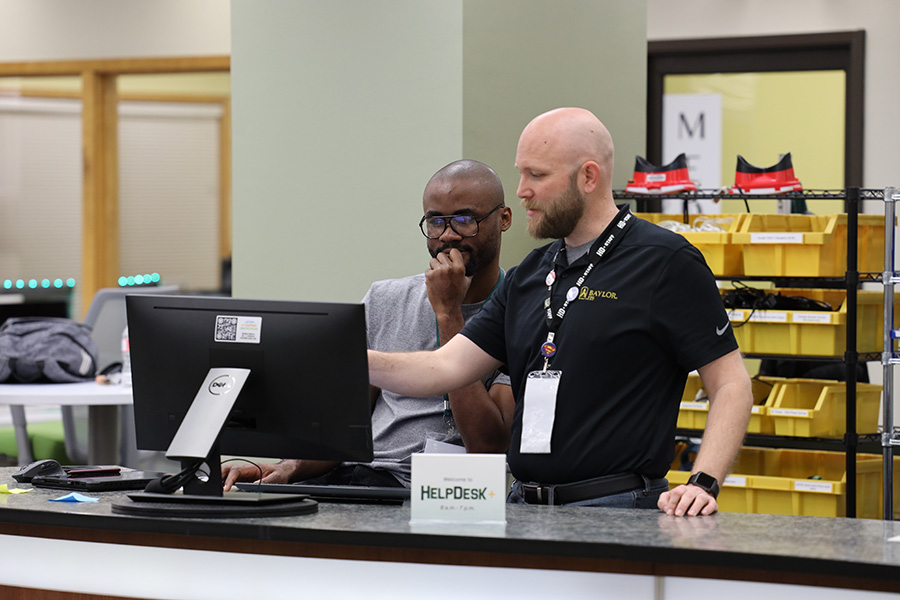A Remarkably Smooth Transition to Remote Work Thanks to Partnership

For Jon Allen, Baylor’s chief information security officer, the process of transitioning Baylor’s tens of thousands of students, faculty and staff to remote work was a blur.
“Though there were some conversations around readiness in the weeks leading up to spring break, the initial extension of spring break and transition to two weeks of online learning were the first concrete times where engagement started with faculty,” Allen said. “In reality, it was not until the declaration of classes going online for the remainder of the semester that we saw full engagement. Upon that declaration training classes filled quickly and many more support and equipment requests came in.”
Baylor’s Information Technology Services (ITS), in partnership with Library and Academic Technology Services (LATS) and Academy for Teaching and Learning (ATL), began to rapidly ensure faculty and students were equipped, trained and prepared for online instruction, with the continuation of uninterrupted academic coursework being the number one priority.
“Faculty were great,” Allen said. “LATS had hundreds of faculty members join online trainings for Canvas and WebEX. The biggest challenge has been helping with remote technology challenges. This includes lack of computers and high-speed internet access. Significant resources have been dedicated to triage these needs across the campus population and work with end users to find solutions.”
As students and faculty started to ease into online instruction, the focus shifted to staff, with the City of Waco and State of Texas announcing stay-at-home protocol that required nearly all of Baylor staff and faculty to also work remotely.
“Fortunately, the move to online instruction and the move for staff to work at home did not occur at the same time, as it allowed our HelpDesk and support staff to manage the significant demand.
While the herculean efforts of ITS, LATS and ATL provided a remarkably smooth transition, given the scale and circumstances, the move also required rapid changes and flexibility for all involved, some that Allen sees as potentially permanent changes that have provided some silver linings.
“The biggest shift for staff was the broad adoption of Microsoft Teams for communication and online meetings. I expect this is a change that will continue even once we are back on campus, as many have commented how they like the platform for quick meetings and questions.”
All in all, Baylor’s ongoing investment in technology infrastructure, like the University’s Virtual Private Network (VPN), prevented potentially disastrous outcomes for end users, allowing the ITS team to focus on students and faculty staying connected.
“Expanding VPN was not as challenging as it was for many institutions,” Allen said. “Baylor had hardware in place to accommodate the higher user count, with only minor configuration changes required to increase the user capacity.”
As the spring semester begins to wrap up and preparations for the first online summer session continue, Allen and Baylor’s ITS hope to see a replication of the spirit of grace and patience exhibited by the faculty during the transition.
“The faculty were responsive and understanding throughout this monumental effort,” Allen said. “We will continue to offer support to finish up the spring, while also looking to the needs of faculty, staff and students for summer coursework.”